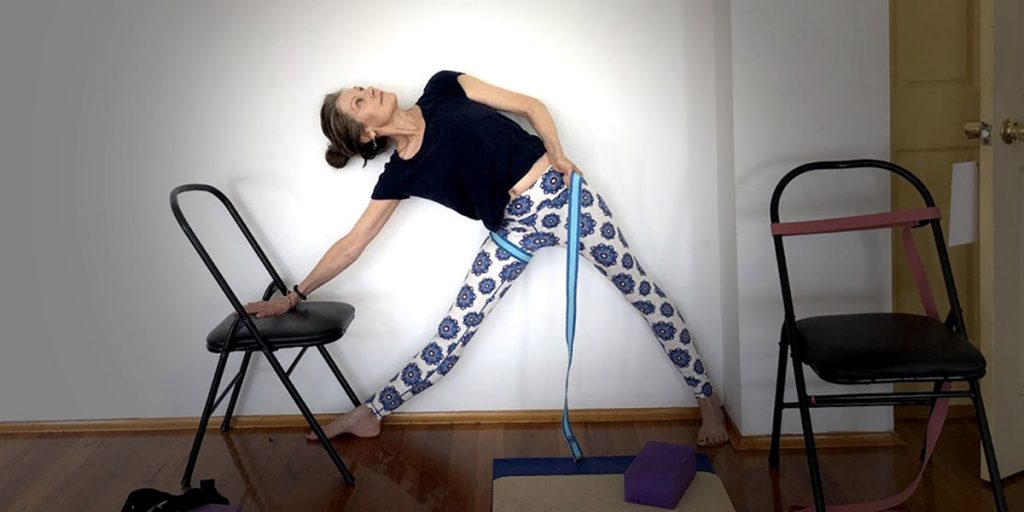Iyengar Yoga as a way to find balance and space in the body and the mind
Dimity Wehr

“Balance in the body is the foundation for balance in life. In whatever position one is in, or in whatever condition in life one is placed, one must find balance”.
B.K.S. Iyengar
What are you doing to come to terms with the uncertainty of the pandemic?
Most of us are reactive when things move beyond our control. We look to fill a gap, to blame someone or something. You might buy a puppy, take up cooking or learn a new language. Mostly these things distract us and take us out of the chatter of the mind and the pains of the body in order to cope.
Have you considered, though, that in a time of wanting to go out beyond the house, the neighbourhood and the city that it might be precisely the time to go inside yourself?
Why do I choose to practice Iyengar Yoga?
Being in Sydney in week 7 of lockdown, it is difficult to plan anything beyond one day. Routine may be key. Having predictable activities to look forward to and focus on, can stop the brain going into overwhelm, and it can prepare for what is coming next.
Doing Iyengar yoga regularly has been part of my routine. Iyengar yoga integrates postures (asana) and the breath (pranayama) with precise alignment developing greater strength and stability in the body, and over time, a deeper sense of mental, spiritual and physical wellbeing .
During the lockdown I have been able to tap into Zoom classes with my regular teachers and to practice myself at other times. Getting a daily practice going doesn’t have to be a big thing. Here are some tips to get you started.
Roll out the mat: this may seem super simple but having the mat rolled out reminds you that your practice awaits and is calling you to it.
Create some space: have a space that you can move or stretch in and is well ventilated.
Make it ambient: low lights, a candle, incense or infuser can imbue your home practice with atmosphere and add a sense of comfort and occasion.
Start small: home practice does not have to be long. Your 90 minute yoga class may be a stretch with distractions at home and if you plan a long session it may not happen. Start with 10 or 20 minutes and build from there. I find the mat looks after me and each asana takes me naturally to the next one.
Props can be modified: if you are at home and don’t have props you can use what is to hand. A towel can become a bolster, books can be blocks and a scarf can be a yoga belt. You can use the wall, a couch and a chair to do restorative poses. Redfern Yoga Space has some solutions in this video
Use a sequence: If you need some inspiration about what to practice, there are plenty of sequences at various Iyengar websites. There is one here that you could start with.
Don’t forget Savasana: it is just as important if not more important to do restorative yoga in these fractious times. Savasana is the most difficult and yet the most beneficial pose. It relaxes the body and with that focussed stillness, the mind can begin to pause. Ten minutes lying in savasana, mindful of the breath, can change your whole outlook when you resume your day.
Want to know more ?
You can jump on the mat as a beginner, foundation or experienced yogi at Redfern Yoga Space where studio classes are launching as soon as possible after the Covid lockdown finishes. Meanwhile, why not try their online classes!
